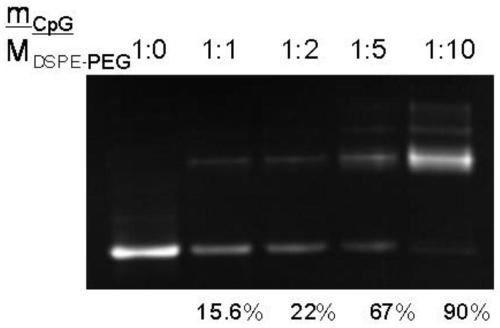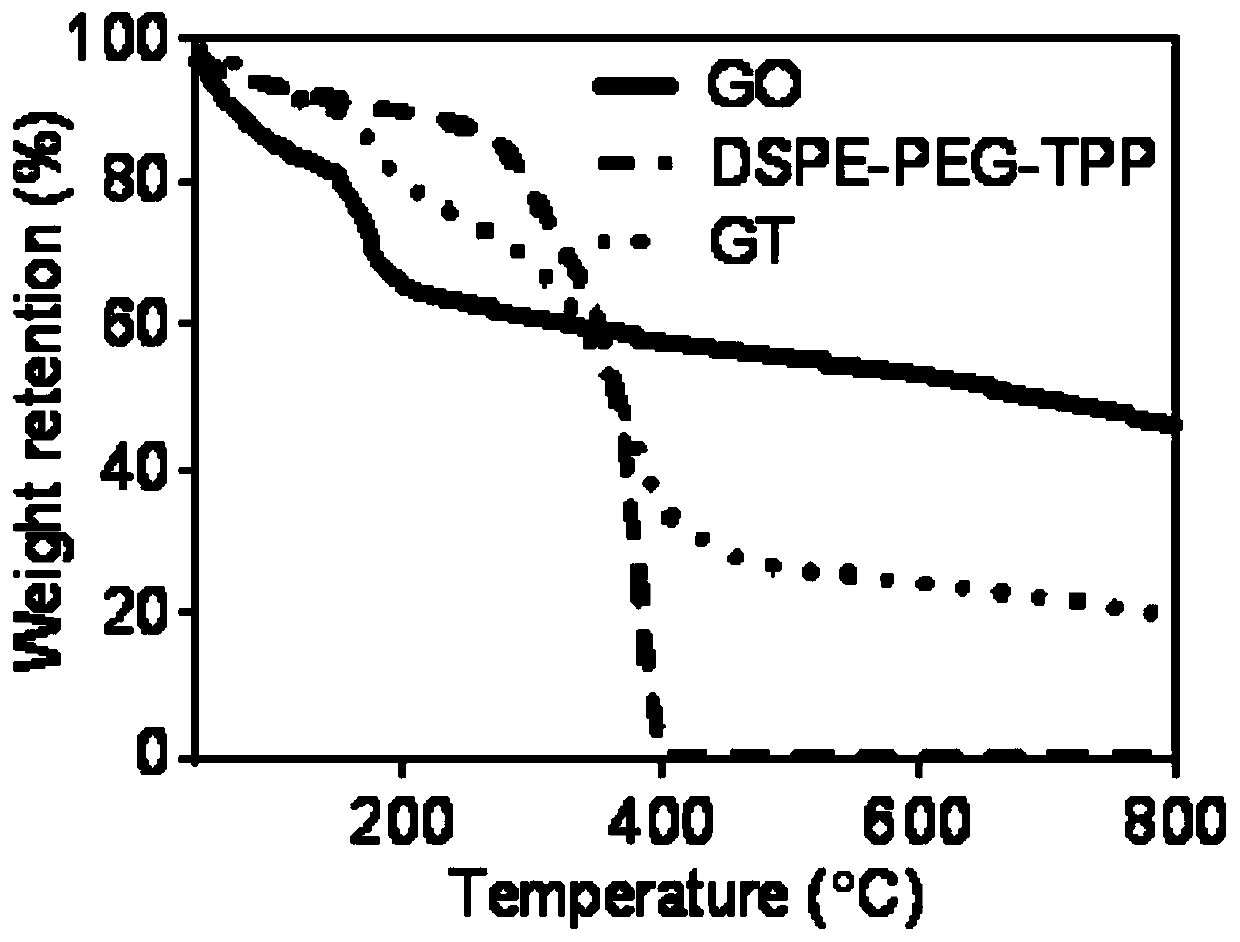A mitochondria-targeted nanophotosensitive immune compound drug and its preparation method and application
An immune complex and mitochondrial technology, applied in nanomedicine, nanotechnology for materials and surface science, drug combination, etc., can solve problems such as time-consuming, lack of clinical-grade vaccine standard solutions, and low migration rate of dendritic cells
- Summary
- Abstract
- Description
- Claims
- Application Information
AI Technical Summary
Problems solved by technology
Method used
Image
Examples
Embodiment 1
[0078] A method for preparing a mitochondria-targeted nano photosensitive immune complex drug:
[0079] In this implementation, the phospholipid adopts distearoylphosphatidylethanolamine (hereinafter abbreviated as DSPE), and the lipophilic cationic group adopts the phenylphosphine group. Specifically, the lipophilic compound containing the phenylphosphine group adopts the 5-carboxypentyl Triphenylphosphine bromide, IR820 as photosensitizer, and CpG ODN 1826 as immune adjuvant;
[0080] In this implementation, the lipophilic cationic copolymer is first loaded on the nanocarrier to prepare the targeted nanocarrier (hereinafter referred to as GT), and then the immune adjuvant copolymer is loaded on the GT, and finally the photosensitizer is loaded to obtain the photosensitive immune system. compound drugs;
[0081] The following is the concrete operation of this embodiment:
[0082] Step 1: Synthesis of lipophilic cationic copolymer DSPE-PEG-TPP and DP-CpG copolymer;
[0083]...
Embodiment 2
[0100] Take 0.5 mL of the 0.5 mg / mL GT solution prepared in step 2 into a brown centrifuge tube, add 20 μL of the 0.22 mg / mL CpG ODN 1826 solution, and then place the mixed solution on a constant temperature shaker at a speed of 200 rpm. Reacted for 12 hours; after the reaction, the solution was transferred to a 10mL centrifuge tube, centrifuged at 15000rpm for 30 minutes, then washed three times with ultrapure water to remove unloaded CpG ODN 1826, and then Dilute pure water to 0.25mL, store at 4°C, and obtain a nanocomposite loaded with CpG ODN 1826 on nanographene oxide (hereinafter referred to as GT / CpG ODN nanocomposite);
[0101] In order to compare the encapsulation efficiency (EE) and drug loading rate (DLR) of the GT / CpG ODN nanocomposite prepared in this example and the GT / DP-CpG nanocomposite prepared in step 3 in Example 1, this example is obtained by The fluorescent probe FAM labeled CpG in the two nanocomposite solutions respectively, and the fluorescence intensi...
Embodiment 3
[0106] In this example, the photodynamic-photothermal properties of GT / DP-CpG / IR820 prepared in Example 1 of the present invention were tested, and the evaluation was mainly carried out by the following methods:
[0107] (1) Determination of singlet oxygen production rate in vitro:
[0108] This embodiment uses the green singlet oxygen probe (SOSG) to detect the singlet oxygen production rate of GT / DP-CpG / IR820 and photosensitizer IR820;
[0109] The detection principle is as follows: when there is no singlet oxygen, the electron transfer in the SOSG molecule quenches the fluorescence of the chromophore, while in the presence of singlet oxygen, SOSG forms an endoperoxide, resulting in a change in electron transfer, and the chromophore Fluorescence was recovered at 530nm. Therefore, the increase in the fluorescence intensity of SOSG at 530 nm directly reflects the production of singlet oxygen.
[0110] The specific operation of singlet oxygen yield measurement is as follows: ...
PUM
| Property | Measurement | Unit |
|---|---|---|
| particle diameter | aaaaa | aaaaa |
| molecular weight | aaaaa | aaaaa |
| wavelength | aaaaa | aaaaa |
Abstract
Description
Claims
Application Information
 Login to View More
Login to View More - R&D
- Intellectual Property
- Life Sciences
- Materials
- Tech Scout
- Unparalleled Data Quality
- Higher Quality Content
- 60% Fewer Hallucinations
Browse by: Latest US Patents, China's latest patents, Technical Efficacy Thesaurus, Application Domain, Technology Topic, Popular Technical Reports.
© 2025 PatSnap. All rights reserved.Legal|Privacy policy|Modern Slavery Act Transparency Statement|Sitemap|About US| Contact US: help@patsnap.com



